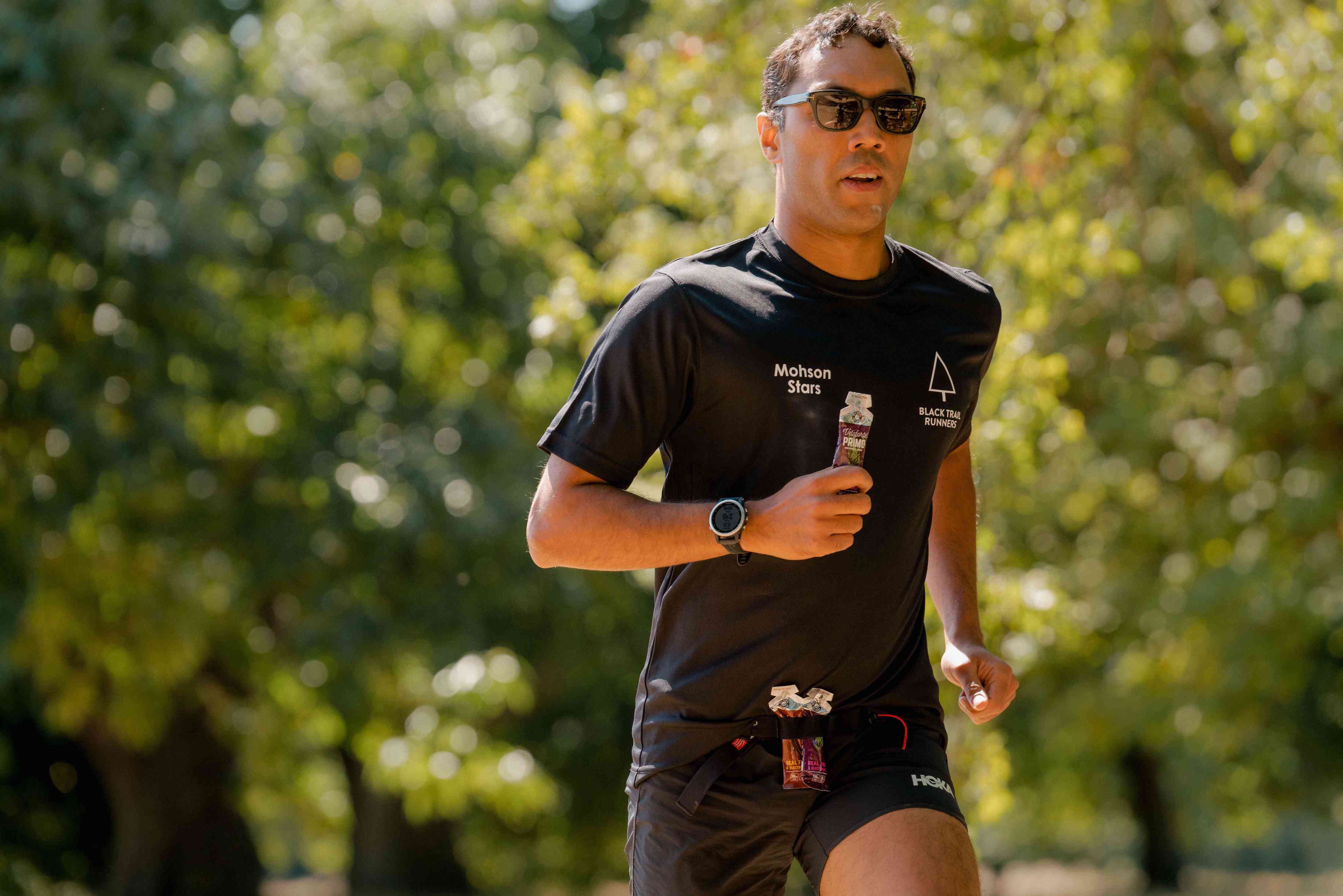

Featured
How Long To Train For Half Marathon?
Modified: January 22, 2024
Discover the optimal training duration for a half marathon with our featured guide. Get expert advice and tips to maximize your performance.
Introduction
Training for a half marathon is an exciting and rewarding endeavor that requires dedication, time, and proper planning. Whether you’re a beginner looking to challenge yourself or an experienced runner aiming to improve your race performance, it’s important to understand how long it will take to train for a half marathon.
Preparing your body for the demands of a 13.1-mile race requires a structured training program that gradually builds your endurance and strengthens your muscles. The duration of your training will depend on several factors, including your current fitness level, running experience, and goals.
In this article, we will delve into the various factors to consider before embarking on your half marathon training journey. We will also provide an overview of different training timelines and duration, along with sample training plans for beginners, intermediate, and advanced runners. Additionally, we will offer tips for successful training and highlight common mistakes to avoid.
So, whether you’re lacing up your sneakers for the first time or aiming for a personal best, let’s dive in and explore how long it takes to train for a half marathon.
Factors to Consider Before Training
Before you begin your half marathon training, it’s important to take certain factors into consideration. These factors will help determine the duration and intensity of your training program. Let’s explore these factors in detail:
- Current Fitness Level: Assess your current fitness level to gauge how much training you will need. If you are already an active individual who regularly engages in cardio activities, you may require a shorter training period compared to someone who is relatively sedentary.
- Running Experience: Your experience as a runner plays a significant role in your training duration. Beginner runners will generally need more time to build up their endurance, while seasoned runners may already have a solid fitness base and can focus on improving their speed and technique.
- Time Commitment: Consider how much time you can dedicate to training. Training for a half marathon requires a consistent and disciplined approach, so it’s essential to assess whether you have enough time in your schedule to devote to regular workouts.
- Health and Injury History: Take into account any pre-existing health conditions or injuries that may affect your training progression. It’s crucial to consult with a medical professional if you have any concerns or to seek guidance on modifying your training based on your specific needs.
- Goal Setting: Clearly define your goals for the half marathon. Are you aiming to complete the race and enjoy the experience, or do you have a specific time or performance goal in mind? Your goals will impact the intensity and duration of your training program.
By considering these factors, you can tailor your half marathon training program according to your individual circumstances and set yourself up for a successful and injury-free journey.
Training Timeline and Duration
The timeline and duration for training for a half marathon can vary based on individual factors and goals. However, it’s generally recommended to allow yourself a minimum of 12 weeks for training, especially if you’re a beginner or new to running longer distances. This timeframe allows for a gradual buildup of mileage and helps reduce the risk of overuse injuries.
For individuals with some running experience or a higher fitness level, an 8 to 10-week training program may be sufficient. However, keep in mind that it’s always best to err on the side of caution and give yourself more time if needed.
The training duration can also be influenced by your specific goals. If you’re aiming to complete the half marathon without any time goals, your training may focus more on gradually increasing your endurance and becoming comfortable with longer runs. On the other hand, if you have a performance goal, such as achieving a certain finish time, your training may involve more speed work and race-specific workouts.
It’s important to follow a structured training plan that includes a combination of easy runs, long runs, speed workouts, and rest days. This variety in workouts helps build endurance, improve speed, and prevent overtraining.
Additionally, incorporating cross-training activities such as cycling, swimming, or strength training can benefit overall fitness and help prevent overuse injuries. Cross-training allows for active recovery while engaging different muscle groups.
As you progress through your training, it’s crucial to listen to your body and make adjustments as needed. If you experience excessive fatigue, persistent pain, or signs of overtraining, it’s essential to rest and seek guidance from a healthcare professional if necessary.
Remember, everyone’s body is different, and training duration can vary. It’s better to start with a conservative approach and gradually increase the intensity and volume of your training. By doing so, you’ll give yourself the best chance to reach your goals while minimizing the risk of injury.
Beginner Training Plan
If you’re new to running or have limited experience with longer distances, following a structured training plan designed specifically for beginners is essential. This plan will gradually build your endurance, improve your running form, and help prepare you for the half marathon distance. Here’s a sample beginner training plan for a 12-week timeline:
- Weeks 1-4: Start with a combination of walking and running intervals. Begin with a ratio of 1 minute of running followed by 2 minutes of walking, repeated for 20-25 minutes. Gradually increase the running interval and decrease the walking interval as your fitness improves.
- Weeks 5-8: Transition to continuous running at a comfortable pace. Aim for 3-4 runs per week with a duration of 30-40 minutes. Gradually increase the duration of your long run on weekends, adding 1-2 miles each week.
- Weeks 9-12: Increase the frequency and duration of your runs. Aim for 4-5 runs per week, including a long run on weekends. Gradually increase the distance of your long runs, peaking at around 10-11 miles a few weeks before the half marathon. Focus on maintaining a steady and comfortable pace.
- Rest and Recovery: Remember to include rest days in your training plan. Rest allows your body to recover and adapt to the stresses of running. Use these days for gentle stretches, foam rolling, or other forms of active recovery.
As a beginner, it’s important to focus on building endurance rather than speed. Your primary goal is to comfortably cover the race distance on race day. Listen to your body, adjust your pace as needed, and avoid pushing yourself too hard during training.
Consider joining a local running group or finding a training partner to stay motivated and accountable. Having support and camaraderie can make the training journey more enjoyable.
Remember, every runner is unique, and it’s crucial to modify the training plan to suit your own fitness level and needs. Be patient with yourself, trust the process, and celebrate the progress you make along the way.
Intermediate Training Plan
If you have some running experience and are looking to improve your performance in the half marathon, an intermediate training plan will help you take your training to the next level. This plan is designed to gradually increase mileage, incorporate speed work, and improve overall race readiness. Here’s a sample intermediate training plan for a 10-week timeline:
- Weeks 1-3: Start with a combination of easy runs, gradually increasing your mileage to build a solid base. Aim for 4-5 runs per week, including a long run on weekends. Include a speed workout once a week, such as tempo runs or fartlek training.
- Weeks 4-6: Continue building your mileage and incorporating speed workouts. Increase the duration of your long run by 1-2 miles each week. Introduce hill repeats or interval training to improve leg strength and speed.
- Weeks 7-9: Focus on increasing the intensity and specificity of your workouts. Include longer tempo runs at a comfortably hard pace. Incorporate longer intervals or track workouts to improve speed and anaerobic threshold.
- Weeks 10: Begin tapering your training to allow your body to recover and prepare for the race. Reduce your mileage and intensity, but maintain regular running to keep your body primed for race day.
- Rest and Recovery: Incorporate rest days and cross-training activities into your training plan. Use these days to rest, recover, and engage in low-impact exercises such as cycling or swimming to maintain cardiovascular fitness without excessive impact on your joints.
During your intermediate training, it’s important to pay attention to your body and adjust your pace and effort as needed. Don’t be afraid to push yourself during challenging workouts, but also remember to balance it with adequate rest and recovery.
Consider incorporating strength training exercises, focusing on lower body and core strength, to improve running performance and prevent injuries. Additionally, fuel your body with nutritious foods and stay hydrated throughout your training.
Having a training journal or using a running app can help track your progress, analyze your workouts, and make necessary adjustments to your training plan.
Remember, each runner is unique, and it’s essential to adapt the training plan to suit your fitness level and goals. Strive for consistency, be patient with yourself, and trust in the process. With dedication and smart training, you’ll be well-prepared to tackle the half marathon distance.
Advanced Training Plan
If you’re an experienced runner looking to push your limits and achieve a peak performance in a half marathon, an advanced training plan will help you maximize your potential. This plan is designed to further build your endurance, speed, and race-specific fitness. Here’s a sample advanced training plan for an 8-week timeline:
- Weeks 1-2: Start with a combination of easy runs and incorporate speed workouts such as tempo runs and intervals. Aim for 5-6 runs per week, with a focus on quality over quantity. Gradually increase the duration and intensity of your workouts.
- Weeks 3-4: Increase the volume and intensity of your track workouts. Incorporate longer intervals and race pace workouts to improve your stamina and speed. Continue including easy runs and a long run each week.
- Weeks 5-6: Emphasize race-specific training by incorporating workouts that simulate the demands of the half marathon. Include longer tempo runs at a challenging but sustainable pace. Practice running at goal race pace for sustained periods.
- Weeks 7-8: Begin tapering your training to allow your body to fully recover and reach peak performance. Gradually reduce your mileage and intensity while maintaining regular running to stay sharp. Focus on rest, recovery, and mental preparation.
- Rest and Recovery: Incorporate rest days and active recovery activities into your training plan. Use these days for gentle stretching, foam rolling, or engaging in low-impact cross-training such as cycling or swimming to maintain fitness.
During advanced training, it’s important to focus on balancing hard workouts with adequate recovery. Pay attention to cues from your body and adjust your training plan as needed to prevent overtraining and injuries. Incorporate strength training to improve muscular strength and endurance, focusing on exercises that target the lower body and core.
Proper nutrition and hydration are crucial during advanced training. Fuel your body with a balanced diet, including carbohydrates for energy, protein for muscle repair, and healthy fats. Stay hydrated before, during, and after your runs to optimize performance and recovery.
Consider working with a running coach or joining a training group to help structure your workouts, provide guidance, and offer support and motivation during your training journey.
Remember, as an advanced runner, you’ve already built a solid foundation, but the key is to maintain discipline, focus on consistent training, and trust in your abilities. With a well-designed training plan and meticulous preparation, you can achieve your goals and excel in the half marathon.
Tips for Successful Half Marathon Training
Training for a half marathon requires dedication, commitment, and proper preparation. To help you excel in your training and achieve your goals, here are some valuable tips:
- Set Realistic Goals: Define your goals for the race, whether it’s completing the distance, achieving a certain time, or improving your personal best. Set realistic goals that align with your current fitness level and training capabilities.
- Follow a Structured Training Plan: Use a well-designed training plan that gradually increases mileage and incorporates key workouts such as long runs, speed work, and recovery runs. Consistency and following a plan will help build your endurance and improve performance.
- Listen to Your Body: Pay attention to any signs of fatigue, pain, or overtraining. Adjust your training as needed, take rest days when necessary, and seek professional advice if you’re dealing with an injury.
- Include Cross-Training: Incorporate cross-training activities such as cycling, swimming, or strength training to improve overall fitness, prevent overuse injuries, and provide mental and physical variety.
- Focus on Nutrition and Hydration: Fuel your body with a balanced diet, including adequate carbohydrates for energy, protein for muscle repair, and healthy fats. Stay hydrated before, during, and after your runs to optimize performance and aid in recovery.
- Get Proper Rest and Recovery: Allow your body sufficient time to recover and adapt to the stresses of training. Incorporate rest days into your training plan and prioritize quality sleep for optimal recovery.
- Practice Race Day Strategies: Incorporate race day simulations during your training to familiarize yourself with pacing, nutrition strategies, and gear choices. This will help build mental confidence and prepare you for the actual race.
- Address Weaknesses: Identify any weaknesses in your running form or specific areas of improvement. Work on strengthening those areas through targeted exercises, drills, or seeking guidance from a running coach or physical therapist.
- Embrace the Taper: Trust the taper period leading up to the race. Reduce your mileage and intensity as race day approaches to allow your body to fully recover and perform at its best.
- Stay Positive and Enjoy the Process: Half marathon training can be physically and mentally demanding. Stay positive, celebrate small victories, and find joy in the journey. Surround yourself with supportive communities and friends who share your passion for running.
By implementing these tips and strategies, you’ll set yourself up for a successful half marathon training experience and increase your chances of crossing the finish line with pride and accomplishment!
Common Mistakes to Avoid
Training for a half marathon can be challenging, but avoiding common mistakes can help ensure a successful training cycle and race day experience. Take note of these common mistakes to safeguard your progress and enhance your performance:
- Skipping Rest Days: Rest days are crucial for recovery and injury prevention. Avoid the temptation to skip rest days or overtrain, as this can lead to burnout or increased risk of injuries.
- Ignoring Strength Training: Neglecting strength training can hinder your performance and increase the risk of imbalances and injuries. Incorporate strength exercises that target your lower body and core to improve stability and power.
- Neglecting Speed Work: Speed work is essential for improving your race pace and overall speed. Include tempo runs, intervals, and fartlek workouts in your training plan to develop speed and endurance.
- Improper Nutrition and Hydration: Failing to fuel your body properly can limit your training progress and compromise performance. Maintain a balanced diet and stay hydrated before, during, and after your runs to support optimal performance.
- Starting Too Fast: It’s easy to get caught up in the excitement on race day and start the race at a faster pace than you can sustain. Avoid this mistake by pacing yourself and starting at a comfortably challenging pace.
- Not Practicing Race Day Strategies: Not practicing your race day strategies can leave you unprepared and uncertain on the actual race day. Experiment with nutrition, hydration, pacing, and gear choices during your training runs to find what works best for you.
- Comparing Yourself to Others: Every runner’s journey is unique, and comparing yourself to others can lead to feelings of inadequacy or unnecessary pressure. Focus on your progress and celebrate your achievements along the way.
- Ignoring Warning Signs of Injury: Ignoring persistent pain or discomfort can lead to more serious injuries. Listen to your body and seek medical attention if needed to prevent any worsening conditions.
- Neglecting Mental Preparation: The mental aspect of running is just as important as the physical. Incorporate mental preparation techniques such as visualization, positive affirmations, and mindfulness practices to enhance your focus and mental resilience.
- Not Enjoying the Journey: Remember to have fun and enjoy the process of training for a half marathon. Celebrate your milestones and find joy in the improvement and progress you make along the way.
Avoiding these common mistakes will help you stay on track with your training, minimize the risk of injuries, and increase your chances of a successful and enjoyable half marathon experience.
Conclusion
Training for a half marathon is a fulfilling and challenging journey that requires commitment, discipline, and careful planning. By considering factors such as your fitness level, experience, and goals, you can determine the appropriate training timeline and duration that suits your individual needs.
Following a structured training plan tailored to your level, whether you’re a beginner, intermediate, or advanced runner, will help you build endurance, improve your speed, and prepare for the demands of the half marathon distance.
Throughout your training, it’s important to listen to your body, adjust your pace and effort as needed, and prioritize rest and recovery. Incorporating cross-training activities, strength training, and proper nutrition and hydration will support your overall fitness and enhance your performance.
Avoiding common mistakes such as skipping rest days, neglecting strength training, or starting too fast on race day will help safeguard your progress and minimize the risk of injuries. Mental preparation, practicing race day strategies, and enjoying the journey are vital aspects of successful half marathon training.
Remember, every runner’s journey is unique, and it’s important to set realistic goals, stay consistent, and find joy in the process. As you cross the finish line of your half marathon with pride and accomplishment, all the hard work and dedication will be worth it.
So lace up your running shoes, embrace the training, and get ready to conquer the half marathon distance!









